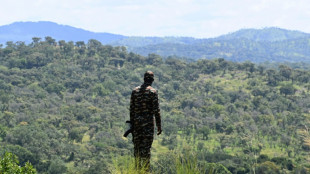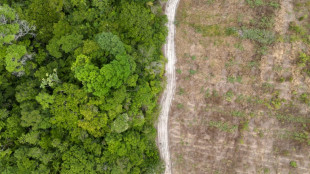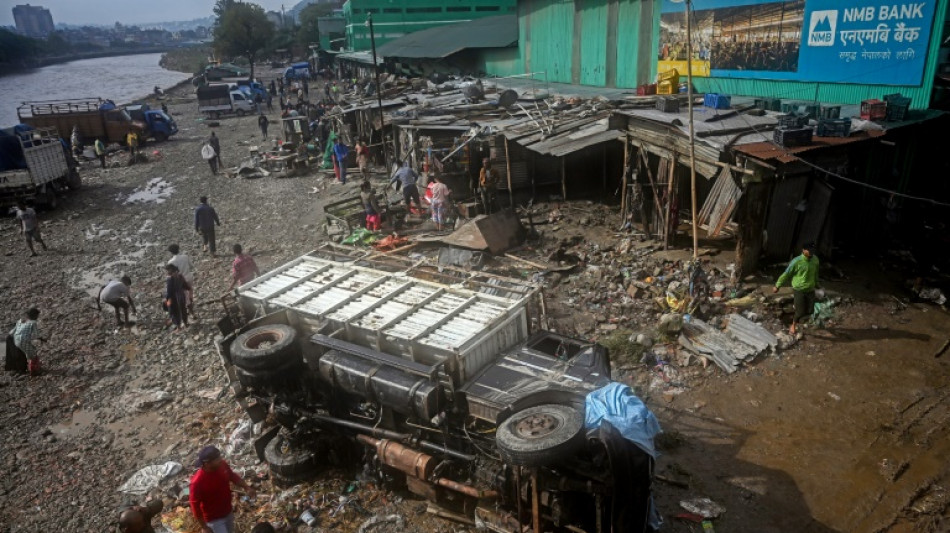
-
 Premier League blames European expansion for lack of Boxing Day games
Premier League blames European expansion for lack of Boxing Day games
-
Bublik sets up Auger-Aliassime semi-final at Paris Masters

-
 World's most expensive coffee goes on sale in Dubai at $1,000 a cup
World's most expensive coffee goes on sale in Dubai at $1,000 a cup
-
Trump stirs global tensions, confusion with nuclear test order

-
 Panic across US as health insurance costs set to surge
Panic across US as health insurance costs set to surge
-
Court eases ban on Russian lugers but Olympic hopes on thin ice

-
 England captain Itoje targets Autumn Nations clean sweep
England captain Itoje targets Autumn Nations clean sweep
-
Calmer Sabalenka sets sights on WTA Finals crown

-
 Spurs boosted by Romero return for Chelsea clash
Spurs boosted by Romero return for Chelsea clash
-
Sudan's RSF claims arrests as UN warns of 'horrendous' atrocities in Darfur
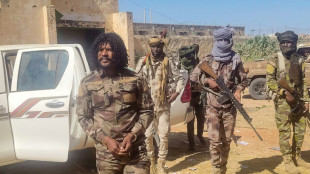
-
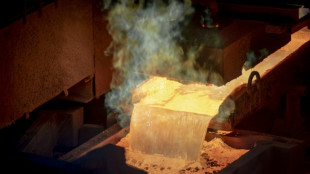 US says 'non-market' tactics needed to counter China's rare earth dominance
US says 'non-market' tactics needed to counter China's rare earth dominance
-
China sends youngest astronaut, mice to space station

-
 From adored prince to outcast, Andrew's years-long fall from grace
From adored prince to outcast, Andrew's years-long fall from grace
-
Rodri return fuels Guardiola belief in Man City title challenge

-
 China holds send-off ceremony for space station astronauts
China holds send-off ceremony for space station astronauts
-
Barcelona to show off unfinished Camp Nou with public training session

-
 Turkish court jails 11 for life over deadly hotel inferno
Turkish court jails 11 for life over deadly hotel inferno
-
Auger-Aliassime ends Vacherot run to reach Paris Masters semis

-
 Australia captain Wilson denies Wallabies use 'dangerous' breakdown tactics
Australia captain Wilson denies Wallabies use 'dangerous' breakdown tactics
-
'Populists can be beaten': Dutch centrist Jetten claims election win

-
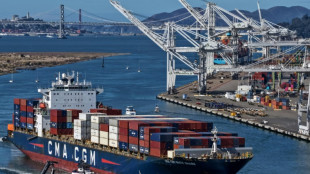 China's suspension of rare earth controls applies to EU: official
China's suspension of rare earth controls applies to EU: official
-
Italy complains about strong euro, urges ECB to cut rates

-
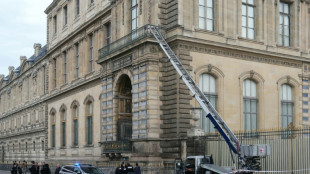 Louvre to get anti-ramming barriers by year end: minister
Louvre to get anti-ramming barriers by year end: minister
-
Wall Street bounces on Amazon, Apple earnings

-
 AI giants turn to massive debt to finance tech race
AI giants turn to massive debt to finance tech race
-
Japan PM says raised 'serious concerns' with Xi on South China Sea, Xinjiang

-
 Shein set to open first physical store in Paris
Shein set to open first physical store in Paris
-
Turkish court jails 11 for life over deadly hotel fire
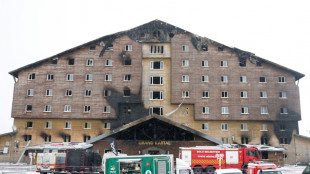
-
 Hazlewood stars as Australia ease past India to win 2nd T20
Hazlewood stars as Australia ease past India to win 2nd T20
-
Stocks extend losses tracking AI, Fed and trade

-
 Arteta concerned for players' welfare in Arsenal fixture pile-up
Arteta concerned for players' welfare in Arsenal fixture pile-up
-
From adored prince to royal outcast, Andrew's protracted downfall
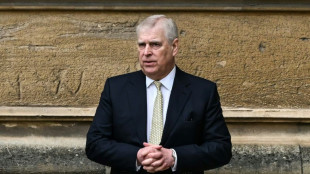
-
 Maresca backs 'stupid' Delap to come good for Chelsea
Maresca backs 'stupid' Delap to come good for Chelsea
-
Pakistan, Afghanistan extend ceasefire, to hold another round of peace talks
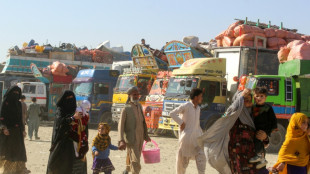
-
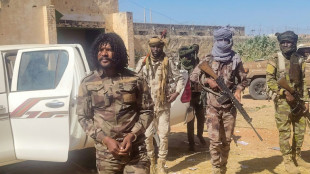 Sudan's RSF says arrests fighters accused of abuses in El-Fasher
Sudan's RSF says arrests fighters accused of abuses in El-Fasher
-
Key dates in the fall of Britain's former prince Andrew

-
 Cricket falls silent across Australia after teenager killed by ball
Cricket falls silent across Australia after teenager killed by ball
-
Vinicius Junior in the clear over Clasico outburst

-
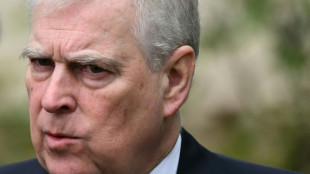 UK welcomes king's move to strip Andrew of royal titles
UK welcomes king's move to strip Andrew of royal titles
-
Liverpool must snap losing 'habit', says under-fire Slot

-
 Bencic out of Hong Kong last eight as tennis injury list mounts
Bencic out of Hong Kong last eight as tennis injury list mounts
-
Xi invites Canada PM to China in first meet in 8 years
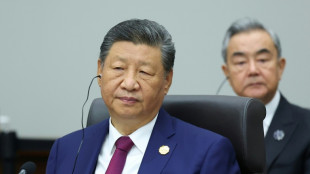
-
 Chinese defence minister seeks 'trust' with US but cautions over Taiwan
Chinese defence minister seeks 'trust' with US but cautions over Taiwan
-
India's Rodrigues beat anxiety and tears to become World Cup star

-
 Asia markets diverge on heels of Apple, Amazon earnings
Asia markets diverge on heels of Apple, Amazon earnings
-
China, Canada leaders hold first formal talks since 2017
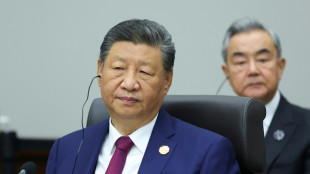
-
 Trump stirs global tensions with surprise nuclear test order
Trump stirs global tensions with surprise nuclear test order
-
Nvidia to supply 260,000 cutting-edge chips to South Korea

-
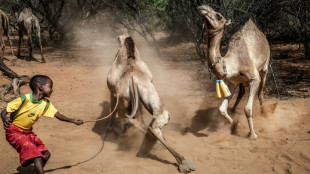 Camels replace cows as Kenya battles drought
Camels replace cows as Kenya battles drought
-
Endangered across west Africa, leopards thrive in I.Coast reserve
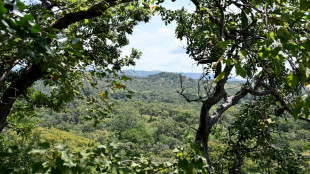

Nepal surveys flood wreckage as death toll reaches 209
Search and rescue teams in Nepal's capital picked through wrecked homes on Monday after waters receded from monsoon floods that killed at least 209 people around the Himalayan republic.
Deadly floods and landslides are common across South Asia during the monsoon season from June to September but experts say climate change is making them worse.
Entire neighbourhoods in Kathmandu were inundated after the heaviest rains in more than two decades, with the capital temporarily cut off from the rest of Nepal after landslides blocked highways.
Nepal's Home Ministry said 209 people had been killed across the country with another 29 still missing.
"We intensified aerial rescue for people who are sick or still need to be brought to safety," home ministry spokesman Rishi Ram Tiwari told AFP.
Police said at least 35 of those killed were buried alive when earth from a landslide careened into vehicles on a highway south of Kathmandu.
Bulldozers were being used to clear nearly two dozen sections of major roads leading into Kathmandu that had been blocked by debris.
The home ministry said it was working to rescue numerous people who had been stranded on the highways.
More than 400 people were rescued from various districts on Monday.
Rescuers in knee-high rubber boots were using shovels to clear mud from the worst-hit riverside neighbourhoods around Kathmandu, many of them unauthorised slum settlements.
The International Centre for Integrated Mountain Development (ICIMOD), a Nepal-based think tank, said the disaster had been made worse by unplanned urban encroachment around the Bagmati River, which flows through the capital.
Nepal's army said more than 4,000 people had been rescued, with helicopters, motorboats and rafts bringing stranded people to safety.
Nilkantha Pandey of the humanitarian organisation CARE Nepal said many of those affected by the floods needed safe drinking water and temporary housing.
"Mostly informal settlements have been affected," Pandey said. "It is time to respond and not delay."
- 'An extreme event' -
Merchants in Kathmandu said damage to intercity roads had drastically cut the supply of fresh fruit and vegetables into the capital.
"The farmers have their produce ready but with the highways blocked, all of it is stuck," Binay Shrestha, who works at one of the city's main produce markets, told AFP.
Nepal's weather bureau said their preliminary data measured record-breaking rain in the 24 hours to Saturday morning.
A monitoring station at Kathmandu airport recorded about 240 millimetres (9.4 inches) of rain, the highest figure since 2002.
Climate expert Arun Bhakta Shrestha of ICIMOD told AFP that rainfall should be decreasing by late September with the end of the annual monsoon.
"Rainfall of this kind has to be described as abnormal," he said.
"It is an extreme event... I see the possibility of the role of climate change to some extent."
But he added that unplanned urban development had also worsened the impact of the disaster.
The summer monsoon from July to September brings South Asia 70-80 percent of its annual rainfall and is vital for agriculture and food production in a region home to around two billion people.
However, monsoon rains also bring widespread death and destruction in the form of floods and landslides.
Experts say climate change has worsened their frequency and intensity.
More than 300 people have been killed in rain-related disasters in Nepal this year.
P.Santos--AMWN
